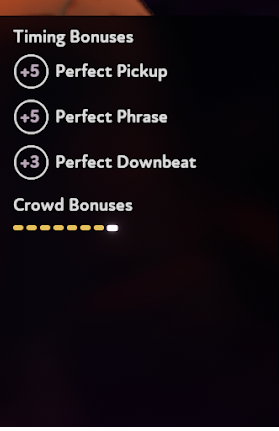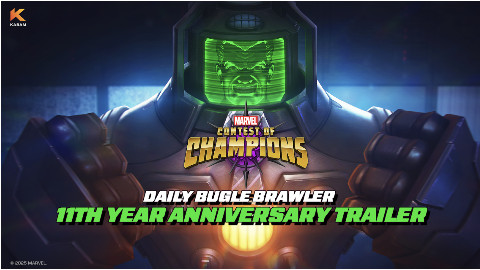
This guide is meant to help familiarize the community with the Battle mode in Fuser and help everyone have a fair shake in what’s a truly fun mode that rewards knowledge and practice with your crate of songs.
This guide will cover the Basics, How to defensively mix, your Cue Drop and a few advanced techniques for battles that aren’t in any other modes.
Please let me know via DM on Discord in the Harmonix or Fuser Subreddit servers (@Nerdcorettv) if you have any suggestions or additions to this guide.
Battle Mode is very similar to a fighting game, in that your goal is to reduce your opponent’s influence to 0 by controlling the mix and dropping crowd requested songs to win the round. Battles are best of three rounds and require two wins to win the match.
If you’ve played a fighting game, you’ll notice right away that the setup of the screen is even incredibly similar, with the influence bars across the top, and your Crate right below like it is in Campaign and Freestyle. It’s important to note that your influence does NOT always show on the left side. Double-check and make sure you know which bar is yours.
In Battles, you don’t have access to the Instrument, Effects or Snapshot pages of your crate.

You’ll notice a set of crowd requests on the bottom right side and a new dial around the “VS” in the center that gradually fills up. This dial represents when damage is going to be dealt. This is also reflected on the individual discs in the deck. When the damage meter fills, all discs in the mix lose 1 STR. Damage is dealt every seven beats as the difference in power between your disc’s total strength and your opponent’s total strength.
Your Cue dial also works differently, and has to be charged prior to dropping your cued discs. This prevents spamming of cues, and lets you take advantage of triple Crowd Requests for supercharged attacks!
Your opponent’s current deck is visible in the center of the screen and shows their current mix, plus their Cue Drop dial. Your opponent can also drop a cued mix when their bar is full.
Song Strength
In battles, Disc Strength is made up of three values: Timing, Bonus and Freshness.
Timing is determined by when you drop the song into the mix. If you drop on the downbeat, your song gets +3 Strength. If you drop on a Pickup or a Phrase, it gets +5 Strength.

Pickups are represented in the track bar by little pips that appear when you highlight a song in your crate. They also appear in the song bar that scrolls under the song. These colors correspond to the discs.
Phrase is a little different. These occur about every 4 bars and are represented by a thick, glowing bar marker. Phrase lets any song dropped on this bar act as though it was dropped on a Pickup. Phrases are incredibly useful, and are prime time for Cue Drops, as each disc will act as though its on a Pickup. This can lead to significant song strength and allow for extended control of the mix.

In general, you want to look to drop on Pickups in your songs and as able, drop when you have a Phrase. You want to avoid downbeats if possible, unless it lets you take advantage of a crowd bonus that is going to expire, or you’re able to knock off an opponent’s disc.
During a battle, Songs will grey out if they are used frequently, giving them a -2 to their strength in addition to any other modifiers. This is discussed further in the “Freshness” section. Songs also gradually decay by 1 Strength every two bars. This is a global effect, so all discs decay at the same time, even if they were just dropped.
Crowd Bonuses
Similar to Campaign, Battle throws Crowd Requests to the players that ask them to add a specific decade, genre or instrument to the mix. These requests rewards a bonus of 3-5 song strength. The first matching song dropped will get the Crowd Bonus added to it, even if it is knocked out of the mix immediately for having lower strength. Songs can be dropped off-beat to claim Crowd Bonuses, which is useful if damage is about to be dealt and you want to soften the blow or turn the tide.
Cue Drops
Cue Drop charge is built by dropping on beat and taking damage. A cue drop allows you to drop up to four songs at once into the mix. The advantage of Cue Drops is that each disc in the drop can benefit from Crowd Bonuses and Phrase drops. This allows for crazy drops with multiple 10+ Strength discs.
Discs can be cued in any track like they can be during Freestyle or Campaign play, and can be cued at any time, even if you’re not ready to drop them. This ability will be discussed further in the dedicated Cue Drop section.
For now, keep in mind that your Cue Drop functions slightly better as a Knockout or as a defense to your opponent’s cue drop.
How Damage is Dealt
Damage in Fuser Battles is dealt as the difference between your disc’s total strength and your opponent’s total strength. This means if you have a total of 15 STR across three discs, and your opponent has 1 disc at 5 STR, you’ll deal 10 damage to them on the 7th beat. Again, this is tracked by the dial around the VS in the center of the screen, and on each individual disc.
The first is the number of pips below your Influence bar, colored to represent what track color you have the most strength in.
The second is white “Warning Damage” that appears while the damage dial fills. This helps you predict how much damage will be dealt.
It’s important to note that after damage, each track in the mix loses 1 Strength. This effectively means if encountered, a disc dropped on a Pickup hangs around for a total of 15 damage (5+4+3+2+1 = 15).
Damage takes away from your Influence. The exception is your last 1 point of damage. You have a Last Chance to deal damage to turn the match in your favor, then you’ll lose the round.
Key Takeaway
For battles, the most important things to keep in mind as you’re learning:
- Damage is dealt every 7 meters as the difference in STR.
- It’s better to have discs in the mix, even if they’re Downbeat drops.
- Crowd Bonuses help your discs stay in longer, and therefore deal more damage.
Fuser Battles are unique in that there’s not really a general “aggressive” strategy like there is in most games. Yes, you can continually drop and keep your discs fresh, but if you’re getting knocked off the table constantly, you’re dealing less damage. My personal philosophy is to play the game defensively, neutralizing the strongest discs on the opposing side, and creating opportunities for free damage whenever possible by using the timing of the damage meter.
Here, we’ll talk about some topics that are a part of playing Fuser battles with a defensive style.
Priority
Blessedly, Fuser doesn’t rely on a complex way of seeing who won what, but you’ll want to keep some things in mind for the stranger behavior of the game during Battles mode. This section’s information is developing, and more information may be available on this soon.
That being said, you do have some priorities to keep in mind when mixing in Battles that aren’t normal. The first and foremost is to keep control of the mix. Again, I prefer a defensive style, so I am watching for my opponent to drop their crowd bonus disc, waiting for the damage, then dropping my identical bonus on the same track to knock their damage-dealing disc out and turning control in my favor.
You also want to keep in mind your Freshness and Cross-Drop opportunities, and when a song has a good section of pickups coming up.
Generally, since you want Pickups, using these is a priority, even if they don’t match your current bonuses. A 5 STR disc on the table reduces the incoming damage by 5 if you’re behind, so it’s well worth it to use pickups as they come available.
We’ll get more into freshness in the next section, but using many different discs helps keep you far ahead of the opponent by avoiding the -2 penalty for stale discs. Keep switching your Crate around to keep yourself naturally fresh without having to look at what’s happening.
Key Takeaway
Things to keep in mind for Priorities during a match:
- Control the Mix by knocking opponent’s discs off after they use their bonuses.
- Use Pickups when possible via Cross-Drop to keep as many tracks filled as possible.
- A Disc in play saves damage.
Freshness
One of the more unique mechanics in Fuser Battles is that the discs go stale, represented by greying out. Discs are considered stale when they have been played within the last 32 bars and if your opponent has played the disc to the mix. Any disc that is stale gets an automatic -2 penalty to its STR, in addition to any bonuses. This can make a difference on a high value drop, and really throw off your strategy.
Staleness is best countered by good organization of your crate, and by rotating your crate frequently during the battle. Additionally, know that your discs directly over the table will naturally be used more because of position, so make sure to stretch outwards and use the default drop buttons to quickly use discs across your deck.
In your crate, you can plan in a few ways.
- Organize by Genre
- Organize by Decade
- Keep Different Instrument Groupings separate (I.E. Drum/Guitar/Guitar/Vocal not sitting next to Drum/Guitar/Vocals/Vocals, and rather something like Mixer/Keys/Keys/Vocals)
Cross Drops
Cross Drops are when you hold and drop a disc into a non-default Cue or play location, I.E. playing a Drum to the Loop track. This is important in battles because of how your discs lock when you’ve got control of that track. Cross Dropp9ing also lets you take advantage of crowd bonuses and lets you easily respond to opponent drops with a bonus drop of your own.
You should use Cross Drop to take advantage of Phrases and Pickups, allowing you to keep the most strength on the board as possible at all times. Cross Dropping is one of the key skills of battling well.
Abandoning Good Taste
While I personally have no good taste what so ever, many people have an ear for what sounds good. In Battles, this is a severe limitation. Waiting for the right time to drop or making a good transition can cost you, and you’ll need to prepare yourself for an auditory assault to climb the ranks.
Primarily, you need to be open to non-standard track sets, such as multiple vocal tracks, all Bass, or other auditory crimes. Don’t be afraid to commit a few sonic atrocities yourself on the way to Star Tier, as often, they can be the right play.
With this knowledge, you should be able to get into the basics of battling and through to Chart Topper (Tier 2) with little need. I’m beginning work now on a Star Tier guide with advanced techniques, skills, and more on crate building and strategy.
Want to watch me battle? I’m live on twitch frequently at twitch.tv/nerdcorettv
-
 Guest Reporter
Guest Reporter
Sort by:
Comments :0





